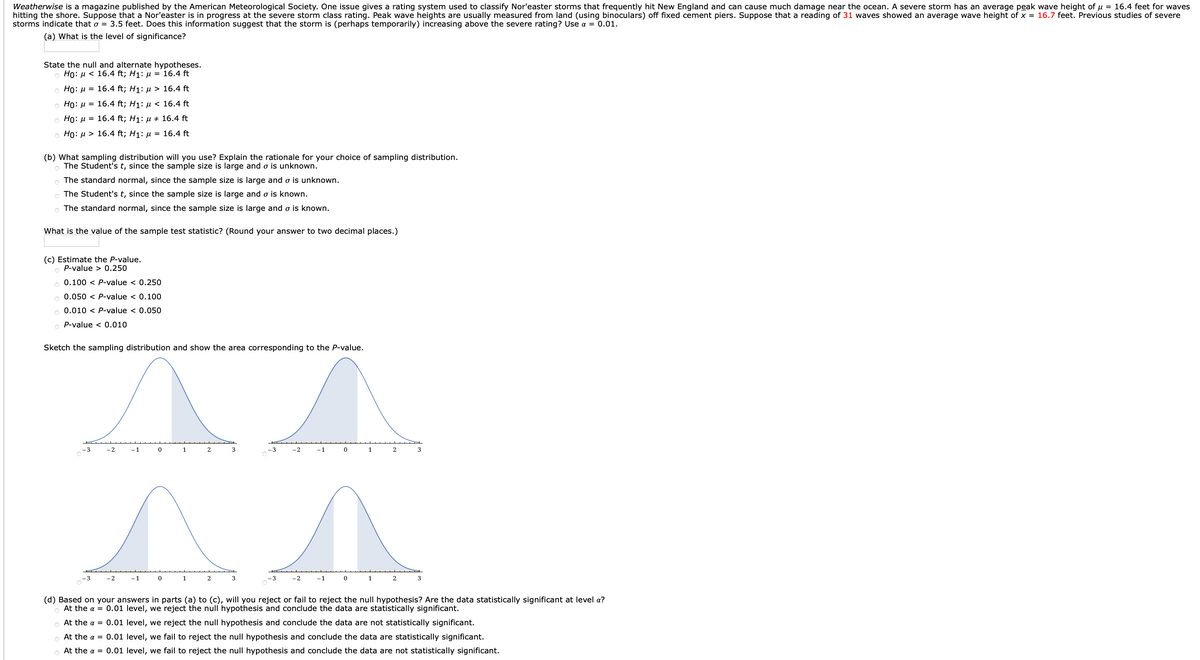State the null and alternate hypotheses. Ho: H< 16.4 ft; H:- 16.4t Họ: H- 16.4 t; Hạ: > 16.4 t Họ: H- 16.4 t; H< 16.4 ft Họ: H- 16.4 t; H: 16.4 Ho: H> 16.4 t; Hạ: - 16.4 ft (b) What sampling distribution will you use? Explain the rationale for your choice of sampling distribution. The Student's t, since the sample size is large and o is unknown. The standard normal, since the sample size is large and e is unknown. The Student's t, since the sample size is large and o is known. The standard normal, since the sample size is large and a is known. What is the value of the sample test statistic? (Round your answer to two decimal places.) (c) Estimate the Pvalue. Pvalue > 0.25o 0.100 < P-value < 0.250 0.050 < P-value < 0.100 0.010 < P-value < 0.050 Pvalue < 0.010 Sketch the sampling distribution and show the area corresponding to the Pvalue. (d) Based on your answers in parts (a) to (c), will you reject or fail to reject the null hypothesis? Are the data statistically significant at level a? At the a-0.01 level, we reject the null hypothesis and conclude the data are statistically significant. At the a- 0.01 level, we reject the null hypothesis and conclude the data are not statistically significant. At the a-0.01 level, we fail to reject the null hypothesis and conclude the data are statistically significant. At the a- 0.01 level, we fail to reject the null hypothesis and conclude the data are not statistically significant.
Compound Probability
Compound probability can be defined as the probability of the two events which are independent. It can be defined as the multiplication of the probability of two events that are not dependent.
Tree diagram
Probability theory is a branch of mathematics that deals with the subject of probability. Although there are many different concepts of probability, probability theory expresses the definition mathematically through a series of axioms. Usually, these axioms express probability in terms of a probability space, which assigns a measure with values ranging from 0 to 1 to a set of outcomes known as the sample space. An event is a subset of these outcomes that is described.
Conditional Probability
By definition, the term probability is expressed as a part of mathematics where the chance of an event that may either occur or not is evaluated and expressed in numerical terms. The range of the value within which probability can be expressed is between 0 and 1. The higher the chance of an event occurring, the closer is its value to be 1. If the probability of an event is 1, it means that the event will happen under all considered circumstances. Similarly, if the probability is exactly 0, then no matter the situation, the event will never occur.

Trending now
This is a popular solution!
Step by step
Solved in 2 steps with 1 images







